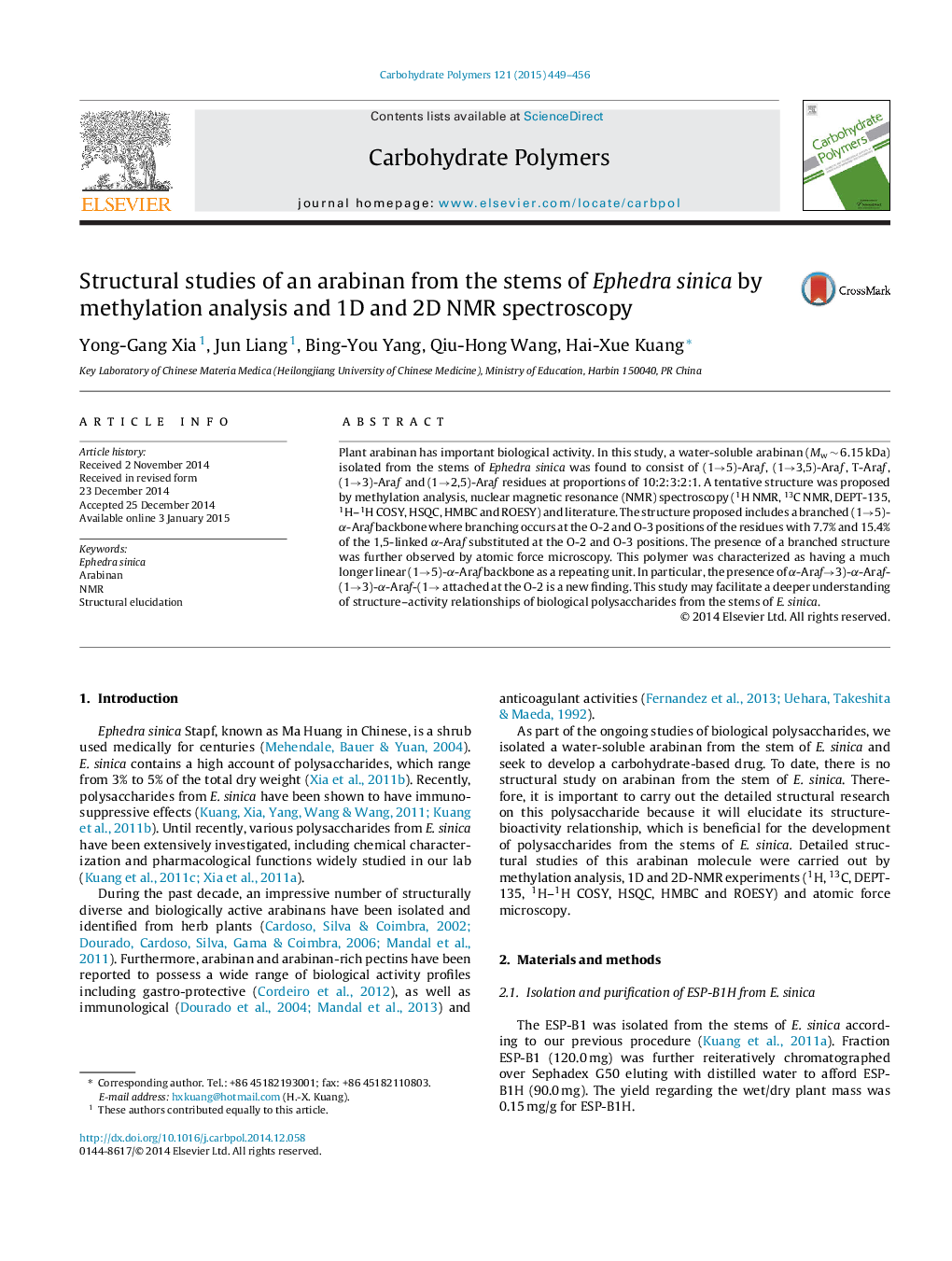| کد مقاله | کد نشریه | سال انتشار | مقاله انگلیسی | نسخه تمام متن |
|---|---|---|---|---|
| 1383285 | 1500637 | 2015 | 8 صفحه PDF | دانلود رایگان |

• Structure of a new arabinan from Ephedra sinica was reported for the first time.
• GC–MS, 2D-NMR and AFM were used for characterization of this polysaccharide.
• The repeating unit was characterized by a much longer linear (1→5)-α-Araf backbone.
Plant arabinan has important biological activity. In this study, a water-soluble arabinan (Mw ∼ 6.15 kDa) isolated from the stems of Ephedra sinica was found to consist of (1→5)-Araƒ, (1→3,5)-Araƒ, T-Araƒ, (1→3)-Araƒ and (1→2,5)-Araƒ residues at proportions of 10:2:3:2:1. A tentative structure was proposed by methylation analysis, nuclear magnetic resonance (NMR) spectroscopy (1H NMR, 13C NMR, DEPT-135, 1H–1H COSY, HSQC, HMBC and ROESY) and literature. The structure proposed includes a branched (1→5)-α-Araf backbone where branching occurs at the O-2 and O-3 positions of the residues with 7.7% and 15.4% of the 1,5-linked α-Araf substituted at the O-2 and O-3 positions. The presence of a branched structure was further observed by atomic force microscopy. This polymer was characterized as having a much longer linear (1→5)-α-Araf backbone as a repeating unit. In particular, the presence of α-Araf→3)-α-Araf-(1→3)-α-Araf-(1→ attached at the O-2 is a new finding. This study may facilitate a deeper understanding of structure–activity relationships of biological polysaccharides from the stems of E. sinica.
Journal: Carbohydrate Polymers - Volume 121, 5 May 2015, Pages 449–456